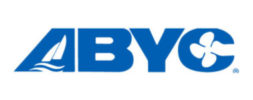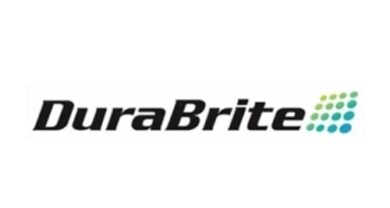Web experts answer your questions
You can build it, but customers won’t necessarily come to your website unless you have a basic understanding of how to position your business to be successful online.
Learning about topics such as search engine optimization, Google ad words, and how best to populate a website with content that keeps visitors coming back, are important tools in this effort.
To help answer dealers’ questions in these areas, we contacted three Web experts at companies that work with marine and powersports dealers on a daily basis. Here are their answers to four of the most frequently heard dealer questions:
How often is it recommended to change the look of a website to keep it ‘fresh’ in the visitor’s eye?
Brad Smith – Product Manager, Web services, ARI: A website should be managed similar to a brick-and-mortar retail location, where inventory displays and specials are updated on a consistent basis. The minimum update timeframe we recommend for a website is once a week. In addition to maintaining interest in your site for returning customers, this has a beneficial impact on your ranking in the search engines. Seasonal tips and related product promotions represent great content that can be rotated on a homepage to keep the content up to date and encourage customers to visit the site often.
Another approach that many successful online sellers use is setting up a daily blog. This provides relevant content and industry news that can attract visitors and search engines that can be directed to your website. There are a number of great, free blogging platforms that can be used for this purpose, such as Blogger and WordPress. Blogs are one of the best ways to build a relationship with your customers, as well as obtain new traffic.
Dave Valentine –?National Sales Manager, Powersports Network: Dealers should understand that keeping content and information fresh for site visitors is far more important than changing the look of the site. However, a site redesign may be worth considering if the site:
– No longer conveys the brand and/or sales strategy of the dealership;
– Looks antiquated;
– Does not incorporate advancements in Internet technology;
– Includes graphics containing outdated or incorrect information.
There is no specific timeframe for changing looks. Ideally, the performance and functionality of the website should be reviewed on an ongoing basis. If the dealer finds the site is not getting the desired results or attracting enough traffic, then perhaps a redesign is in order.
When considering a redesign, dealers also should examine the number of repeat visits to their site. If a dealer has customers that visit the site on a regular basis, then drastic changes to the layout and navigation should be avoided. If a customer has to re-learn where their favorite pages are located, they may decide to browse elsewhere. In this case, it’s best to keep navigation and functionality consistent while applying updated graphics or information to the overall framework of the site.
How do you decide what search engine optimization to use and how much to spend on it?
John Schuldt –?Marketing Director, 50 Below: SEO is sort of like learning to cook. No one starts off as a master chef. It takes time to understand how different ingredients work together to create a great dish. The SEO process is similar. You start with the basics and continue to “tweak your recipe” to get unique results. Search engine results are based on so many variables: products, location, competition, content, etc. SEO techniques like link building, content optimization, meta data and internal linking all play their role. There is no magic number.
If your goal is to be an e-retailer, your spending and strategy will be different than a dealer who wants to have local, top-of-mind awareness.
The process is not a one-time investment — SEO is ongoing because rankings can go up and down based on custom search engine algorithms. What that means is that results will vary by people searching, location, time of day and everything in between. Each plan will be based on keyword research and a dealer’s individual website analytics. Dealers need to decide what search terms to target and create a plan based on those objectives. Keep in mind, the way search engines work in 2010 varies from 2005 — ranking reports no longer represent a true ranking.
Brad Smith: First and foremost, the underlying website structure should be designed with SEO in mind. It’s important to be sure your website framework helps the search engine spiders discover all of your e-commerce content. Since these items are often produced dynamically from a massive database, SEO considerations for these items should be built into the website from the start. This will help to ensure the website performs SEO at an acceptable baseline level.
SEO spending should ideally be equal to the amount of SEM. While SEM produces immediate traffic returns, it does not offer ongoing returns after a campaign has ended. SEO does not provide results as quickly, but has long-term benefits that continue to be realized after the investment. While there are many outside contractors and firms that provide SEO services, it also may be wise to consider operating your SEO strategy in-house. Industry knowledge is an important consideration in SEO that an internal employee can bring to bear that contractors may not be able to match. Additionally, SEO is an ongoing endeavor that should be managed at least weekly for the best results. Simply setting certain SEO strategies in place for the year will not be sufficient to keep a dealership up in the rankings.
Beyond website framework optimization, there are some general best practices that any dealer can utilize to help increase their ranking. One of the most important and easiest areas to optimize a website is the use of meta tags on each page. The meta title and meta descriptions are the most important since they are what are most often displayed in the search engine results.
One very important, but often neglected, piece of SEO is link building. In addition to a great domain name, lots of content and impactful meta tags, links from other websites that are highly ranked are one of the best ways to increase both a dealer’s website traffic and standing in the search results. One of the best places to start is getting the website listed on the manufacturer sites for the products carried. Also consider contributing on some enthusiast forums where you can engage with potential customers and provide links to relevant products. Beyond careful content management, SEO ultimately comes down to a popularity contest. The more prominent websites that link to yours, the more prominent your site will become. The visitor traffic and sales will increase from there.
How much staff time should be allocated to daily/weekly website maintenance?
Dave Valentine: Ideally, a dealership would have a person on staff solely responsible for their website. However, given the economy and the variation in dealership sizes, this is not always possible. The best strategy for dealerships may be to discuss the website in any weekly staff meetings. Each department can convey what they feel needs to be emphasized in their area. Once the areas of importance have been established, it should be fairly easy for one person to update the site within a few hours. Having one person responsible for the site maintenance also should help keep the look, feel and tone of your website consistent.
Of course, there are other factors that may affect the amount of time needed for performing site maintenance. Things like incoming leads, promotion changes and inventory turnover may add to the amount of maintenance time required. However, by committing to making regular updates to the site, it’ll keep the site more organized, fresh and up-to-date for the customers and save the dealership from having to rush to make “bulk” updates at irregular intervals.
Is Google/Yahoo ad-word spending recommended?
Brad Smith: Spending on an ad-word campaign, otherwise known as Search Engine Marketing, is essential to help drive new, qualified traffic to a dealer’s website. The most comprehensive campaigns go beyond Google or Yahoo and incorporate virtually any search engine a prospect might use. We also strongly suggest using a program that allows tracking the phone traffic generated as part of the SEM campaign since these most often represent new and used unit leads. A real-time ROI dashboard, which incorporates all of this information, allows a dealer to understand how his/her campaign dollars are being spent, and determine the best way(s) to allocate future investments.




